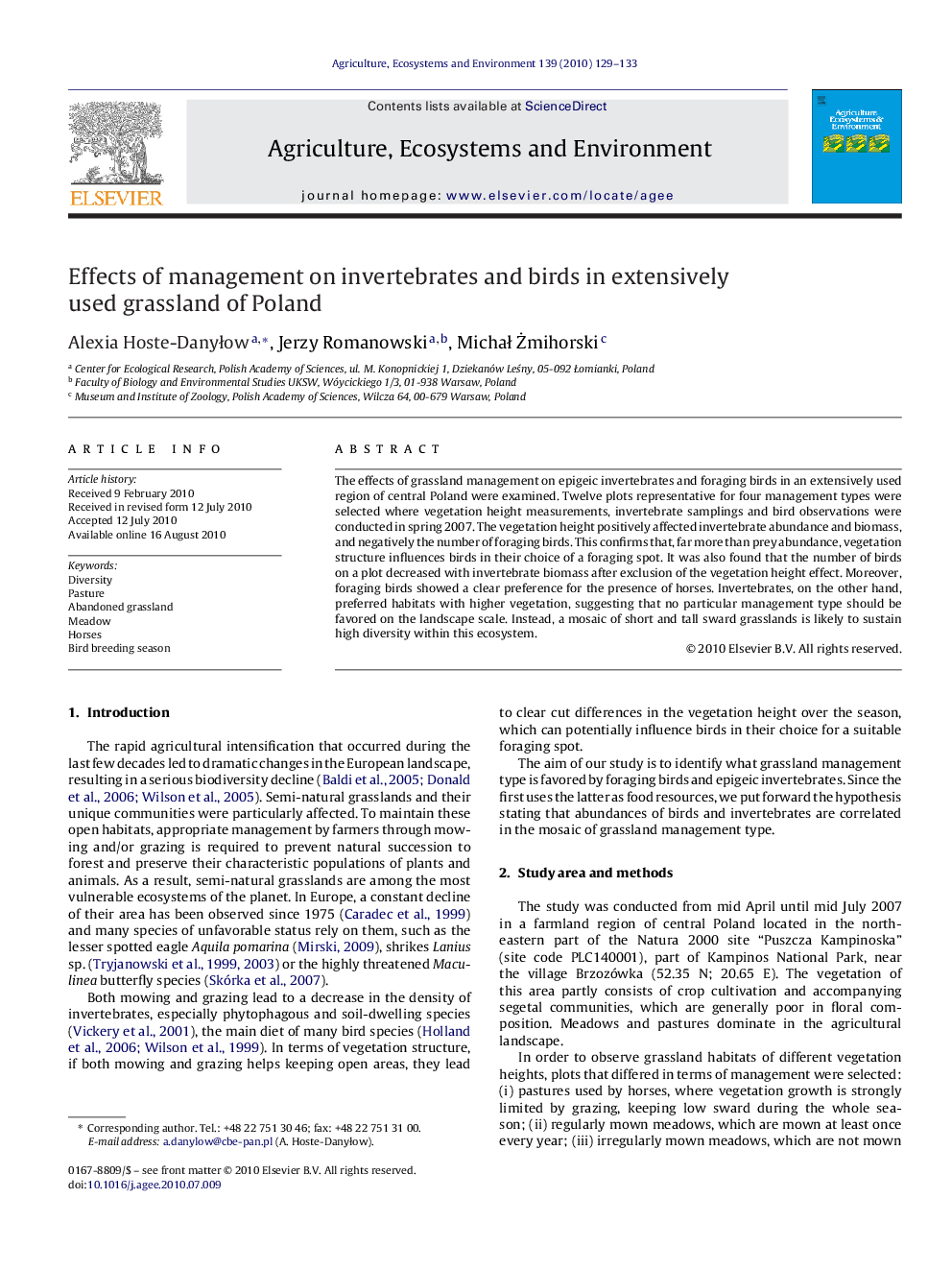| Article ID | Journal | Published Year | Pages | File Type |
|---|---|---|---|---|
| 2414901 | Agriculture, Ecosystems & Environment | 2010 | 5 Pages |
The effects of grassland management on epigeic invertebrates and foraging birds in an extensively used region of central Poland were examined. Twelve plots representative for four management types were selected where vegetation height measurements, invertebrate samplings and bird observations were conducted in spring 2007. The vegetation height positively affected invertebrate abundance and biomass, and negatively the number of foraging birds. This confirms that, far more than prey abundance, vegetation structure influences birds in their choice of a foraging spot. It was also found that the number of birds on a plot decreased with invertebrate biomass after exclusion of the vegetation height effect. Moreover, foraging birds showed a clear preference for the presence of horses. Invertebrates, on the other hand, preferred habitats with higher vegetation, suggesting that no particular management type should be favored on the landscape scale. Instead, a mosaic of short and tall sward grasslands is likely to sustain high diversity within this ecosystem.
Research highlights▶ Management leading to tall sward is preferable for invertebrates. ▶ Management keeping sward low is more favorable to foraging birds. ▶ Birds forage preferably where livestock is present. ▶ Vegetation structure is more important than food abundance to foraging birds. ▶ Pastures are particularly suitable for foraging birds.
